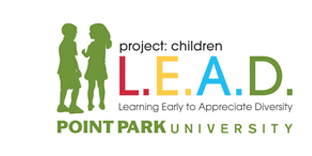Lesson 2 Physical Differences Lesson Series

Physical Differences
Teachers: Sara Conway, Barbara Geary, Joy Evans
Project Children L.E.A.D. Director: Dr. Vincenne Revilla Beltran
Subject Area: Diversity
Grade level: Early Pre-School (Ages 2-3)
Length of Lesson: 20 minutes
Learning Goals Based on the Pennsylvania Academic Standards and High Scope Key Experiences
Key Experiences
-
Sense of Self
-
Social Relations
-
Communication and Language
-
Exploring Objects
Standards
-
2.7 Curriculum guides teachers to plan for children's engagement in play so it is linked to the topic of study.
-
2.12 Materials and equipment used to implement curriculum reflect the lives of children and families, reflect the diversity found in society, including gender, age language, and abilities.
-
2.75 Children are provided varied opportunities and materials to build their understanding of diversity in culture, family structure, ability, language, age, and gender in non-stereotypical ways.
Objectives
-
The children will be able to recognize that everyone is different.
-
The children will be able to recognize and better understand others and themselves with differently "abled" doll equipment and block people.
-
As the children equip their dolls with the wheelchairs, and leg braces, they will learn to dispel stereotypes about people with disabilities.
-
The children will enhance their language skills and add vocabulary when learning about the different disabilities.
-
The children will strengthen their self-identity and build empathy.
-
The children will communicate their name by signing initial letter.
-
The children will greater understand their personal needs and the needs of others
Materials and Equipment Needed
Activity One
- Book: It's Okay to Be Different by Todd Parr
- Multicultural dolls
- Dolls with adaptive equipment
Wheelchair
Two leg braces and two forearm crutches
- Transparent bandages
- Rolled gauze
- Medical tape
Activity Two
- Book: My First Book of Sign by Pamela J. Baker, Patricia Bellan Gillen
- Hearing impaired block person
- Pictures of the letters of the alphabet in sign language
Activity Three
- Book: All Kinds of Children by Norma Simon and Diane Paterson
- Multicultural doll with leg braces
- Multicultural doll with a wheelchair
- Wash basins
- Towels and face cloths
- Sponges
- Empty powder containers
- Diapers
Procedure
Activity One
-
The teacher will designate a table in the room to be the doctor's office. The teacher will bring out the materials to the table.
-
The teacher will then encourage both boys and girls to take care of the dolls that are "hurt."
-
The teacher will assist the children as they manipulate the bandage.
-
The teacher will support the actions of the children by commenting on how the children are making the dolls feel better, just like their families help them when they don't feel well.
-
The teacher will make casual reference about being able to see the skin color through the bandages.
Activity Two
-
Explain to the children how sign language is how deaf people, people who cannot hear, communicate, or talk.
-
Show the children the hearing-impaired block person and ask what looks different.
-
Show the children the book My First Book of Sign.
-
The teacher will demonstrate some of the hand gestures for the key words illustrated in the book.
-
Go around the group and introduce the letter sign for each child's name by placing the hand sign visibly against the chest.
-
Demonstrate the sign each time a child is called upon or when using his or her name.
-
Praise and encourage the child's imitations.
Activity Three
-
Place materials next to the water basin in the designated area.
-
Encourage both boys and girls to clean, shampoo, pat dry and powder the dolls.
-
Ask the children how the dolls with the wheelchair and leg braces can get into and out of the bath.
-
Ask the children what kind of help these children need.
-
Discuss any differences in racial appearance or ability that the children observe. Comment and reaffirm what the children see in a natural and straightforward manner.
-
State that all children, even those who wear glasses, use a wheelchair, or leg braces enjoy having a bath and feeling the bubbly water.
These items will be added to centers around the room
- Lakeshore Block Play People with Differing Abilities
- Adaptive Equipment for Dolls with Disabilities
Wheelchair
Two leg Braces and two forearm Crutches
- Multi-Ethnic School Dolls
Black boy doll
Hispanic Girl Doll
- Color Discovery Tubes
Review
The children enjoyed all of the activities. They asked many questions when dealing with the block play people with differing abilities. The children even started looking at all of the block dolls in the room and asking what was different about them. These activities were best carried out over a few days time. All of the children wanted to have their turn participating in the different activities. Because repetition is very important, having these activities available over a few days time will get the children to play more in depth with them. Having more than two multi-ethnic school dolls would be helpful. Also, having more than one wheelchair and leg braces for the school dolls is important to eliminate tension among the children.
Resources
Hall, Nadia Saderman. (1998). Creative Resources for the Anti-Bias Classroom. New York:
Delmar Publishers.

